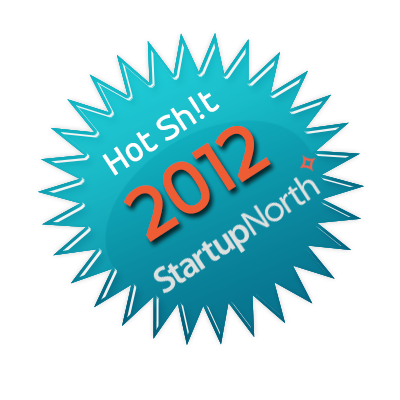We have been tracking startups and people for a while. In 2011 was the first Hot Sh!t List, but it won’t be the last. There are a number of amazing individuals in the ecosystem like Mark MacLeod (LinkedIn, @startupcfo), Boris Wertz (LinkedIn, @bwertz), Dan Morel (LinkedIn, @dpmorel), Debbie Landa (LinkedIn, @deblanda), Chris Arsenault (LinkedIn, @chrisarsenault), Dan Martell (LinkedIn, @danmartell), Jesse Rodgers (LinkedIn, @jrodgers) and others. Over the past 7 years the community has grown, and connected, and continues to help each other.
But this list is different.
It’s not about the people who have raised the most money, or who have the biggest social graphs. It’s about who we expect to talk about over the next 12 months. Be it the ideas, the companies, the impact, etc. My goal was to find a mix of the unsung heroes, the founders, the developers, the doers, the troublemakers and the faces of different companies across Canada that we think are amazing/interesting. What do I mean by “interesting”? Well it depends. But these people are doing the stuff we’ll be talking about over the next 12 months.
The list is no particular order. But there is no denying it, these folks are the:
 Hot Sh!t List 2012
Hot Sh!t List 2012
- Chris Ye (LinkedIn, @cye), Uken Games
- Greg Gunn (LinkedIn, @gunnr), Hootsuite
- Derek Ting (LinkedIn, @enflick), Enflick
- Mike Silagadze (LinkedIn, @tophatmonocle), Top Hat Monocle
- Devon Galloway (LinkedIn, @devongall), Vidyard
- Mazdak Rezvani (LinkedIn, @mazdak), Chango
- Eric Migocovsky (LinkedIn, @ericmigi), Allerta
- Barbara MacDonald (LinkedIn, @BarbaraEMac)
- Ken Seto (LinkedIn, @kenseto), Massive Damage
- Garry Seto (LinkedIn, @garryseto), Massive Damage
- Daniel Eckler (LinkedIn, @piccsydaniel), Piccsy
- Heather Payne (LinkedIn, @heatherpayne), Ladies Learning Code
- Raff Pacquin (LinkedIn, @raffpaqin), Modasuite/Frank and Oak
- Kyle Seaman (LinkedIn, @kyleseaman), HighScoreHouse
- Zak Homuth (LinkedIn, @zakhomuth), Upverter
- Dessy Daskalov (LinkedIn, @dess_e), GreenGauge Mobile
- Ben Morris (LinkedIn, @bnmrrs), ArtBarn Partners
- Nelson Gauthier (@nelgau), Localmind
- Gavin Uhma (LinkedIn, @gavinuhma), GoInstant
- Alex Blom (LinkedIn, @alexblom), Saleschoice
- Omar Ismail (LinkedIn, @omarismail), Streak
- Tony Abou-Assaleh (LinkedIn, @tony_aa), TitanFile
- Monica Olinescu (LinkedIn, @mochromatic), Discuss.io
- Nikolai Bratkovski (LinkedIn, @NikolaiB), HealthAware
- Ali de Bold (LinkedIn, @alidebold), ChickAdvisor
- James Lochrie (LinkedIn, @jameslochrie), Wave Accounting
- Farhan Thawar (LinkedIn, @fnthawar), XtremeLabs
- Michael Nussbacher (LinkedIn, @michaelnus), Epilogger
- Ben Yoskovitz (LinkedIn, @byosko), GoInstant
- Jeff Lawrence (LinkedIn, @datajeff), Granify
- Jay El-Kaake (LinkedIn, @jayelkaake), Sweet Tooth Rewards
- Mike Lawlor (LinkedIn, @haltingstate), Minbox
- Ivan Yuen (LinkedIn, @ivanyuen), Wattpad
- Mike McCauley (LinkedIn, @mmccauley), BufferBox
- Ariel Garten (LinkedIn, @brain_guru), Interaxon
- Adam Meghji (LinkedIn, @AdamMeghji), Uniiverse
- Michael Curry (LinkedIn, @mikecurry), Verelo
- Sonia Ryan (LinkedIn, @sonia), A Thinking Ape
- Temo Chalasani (LinkedIn, @cinemagram), Cinemagram
- Patrick Hankinson (LinkedIn, @phankinson), Compilr
- Andrew Louis (LinkedIn, @hyfen), ShopLocket
- Breanna Hughes (LinkedIn, @unbrelievable), Xtreme Labs



 I love how it works. To use it, you sign up using a one-page form, and you’re then set up with your own account (accounts are free during their beta, but it’s not clear how long they’ll be in beta). You then set up your own alert software to send emails to PagerDuty whenever you want a notification (this is the most time-consuming part because you’ll need to set up each monitoring software individually). PagerDuty doesn’t do the actual monitoring; rather, it receives alert messages via email and routes them to the right person on your team based on rules you build. Alerts can be in the form of SMS, phone calls, or email.
I love how it works. To use it, you sign up using a one-page form, and you’re then set up with your own account (accounts are free during their beta, but it’s not clear how long they’ll be in beta). You then set up your own alert software to send emails to PagerDuty whenever you want a notification (this is the most time-consuming part because you’ll need to set up each monitoring software individually). PagerDuty doesn’t do the actual monitoring; rather, it receives alert messages via email and routes them to the right person on your team based on rules you build. Alerts can be in the form of SMS, phone calls, or email. One of my favourite parts of the software is the great UI on the built-in calendar that allows you to set up which person on your team is on-call at any time.
One of my favourite parts of the software is the great UI on the built-in calendar that allows you to set up which person on your team is on-call at any time.




 If you are like me, your blog aggregator is getting a little out of hand. Once you start climbing over 150 feeds, and well in to the 200s, you are starting to get overloaded. I have, on a few occasions, deleted all the feeds from my feedreader and have started from scratch.
If you are like me, your blog aggregator is getting a little out of hand. Once you start climbing over 150 feeds, and well in to the 200s, you are starting to get overloaded. I have, on a few occasions, deleted all the feeds from my feedreader and have started from scratch.